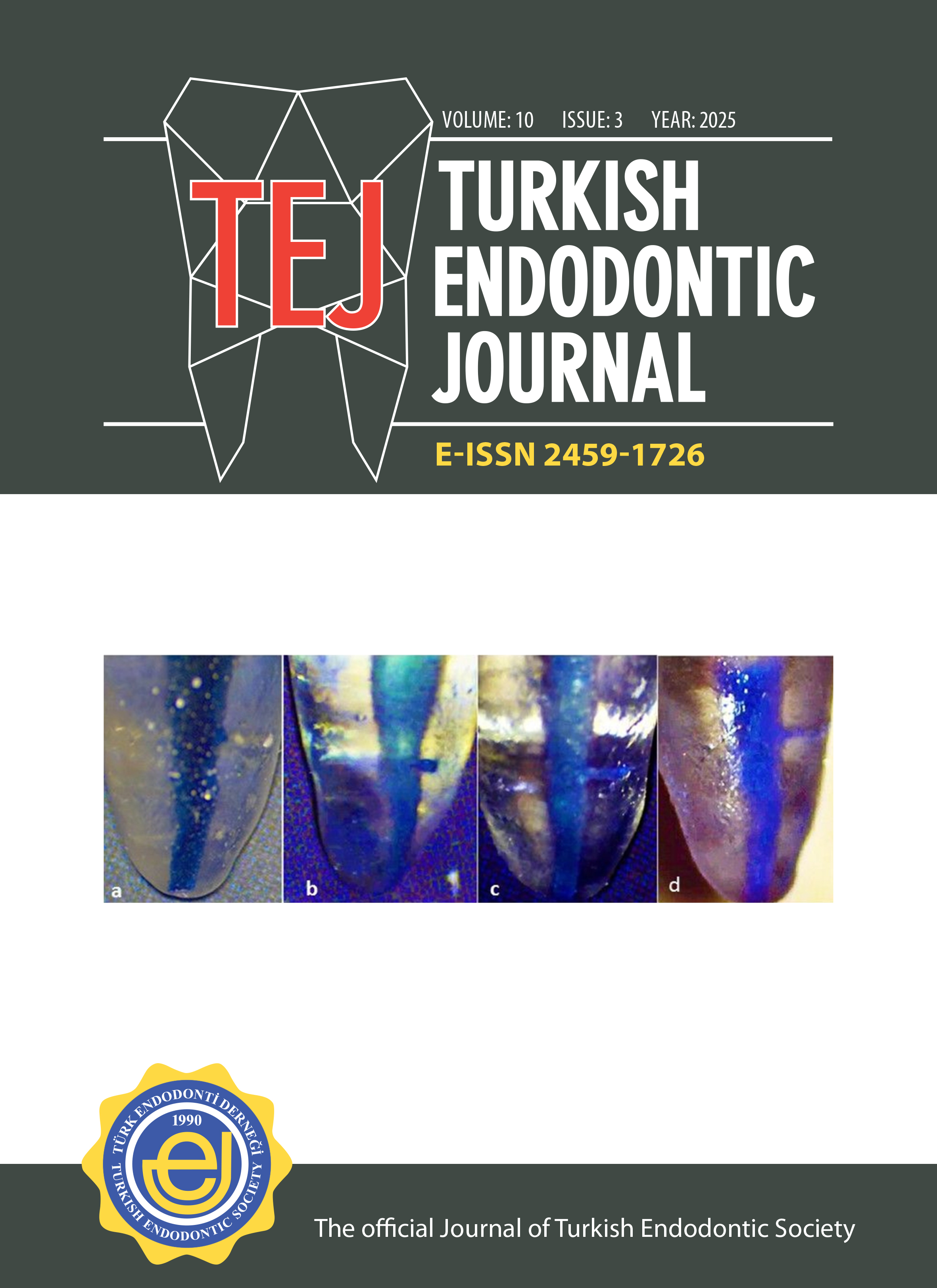Conservative management of a periradicular lesion associated with a palatogingival groove
Hakan Arslan1, Serhat Köseoğlu2, Hazal Ergün3, Elif Tarım Ertaş41Department Of Endodontics, Faculty Of Dentistry, Ataturk University, Erzurum, Turkey.2Department Of Periodontology, Faculty Of Dentistry, Izmir Katip Celebi University, Izmir, Turkey.
3Department Of Endodontics, Faculty Of Dentistry, Izmir Katip Celebi University, Izmir, Turkey.
4Department Of Oral Diagnosis And Radiology, Faculty Of Dentistry, Izmir Katip Celebi University, Izmir, Turkey.
Aim: The aim of this case report was to present the management of a periradicular lesion and the maintenance of pulp vitality following surgical odontoplasty in a maxillary lateral incisor with a palatogingival groove (PGG).
Summary: A case of PGG in the maxillary left lateral incisor with vital pulp and a large periradicular lesion is reported. Surgical odontoplasty of the PGG and restoration of the coronal part of the PGG were performed without root canal treatment. Follow-up revealed that the pulp responded to cold test in the same manner as prior to treatment and the periradicular lesion was resolved.
Conclusion: In cases where the apical pathosis includes the apical part of the root, the tooth should be evaluated using pulp vitality tests to determine whether the pulp is healthy. A tooth with vital pulp and periapical radiolucency should raise the suspicion of morphological changes, such as a PGG, in the tooth. A detailed examination of the tooth should be performed. Cone-beam computed tomography could be beneficial in making a definitive diagnosis.
Keywords: Odontoplasty, palatogingival groove, periradicular lesion, vital pulp.
Palatogingival oluktan kaynaklı periradiküler lezyonun konservatif tedavisi
Hakan Arslan1, Serhat Köseoğlu2, Hazal Ergün3, Elif Tarım Ertaş41Atatürk Üniversitesi, Diş Hekimliği Fakültesi, Endodonti Ana Bilim Dalı, Erzurum2İzmir Katip Çelebi Üniversitesi, Diş Hekimliği Fakültesi, Periodontoloji Ana Bilim Dalı, İzmir
3İzmir Katip Çelebi Üniversitesi, Diş Hekimliği Fakültesi, Endodonti Ana Bilim Dalı, İzmir
4İzmir Katip Çelebi Üniversitesi, Diş Hekimliği Fakültesi, Oral Diagnoz ve Radyoloji Ana Bilim Dalı, İzmir
Amaç: Bu vaka raporunun amacı palatogingival oluğa (PGO) sahip üst çene lateral kesici dişte cerrahi odontoplastiyi takiben pulpa vitalitesinin devam etmesini ve periradiküler lezyonun tedavisini sunmaktır.
Yöntemler: Vital pulpaya ve periradiküler lezyona sahip üst çene lateral kesici dişteki PGO rapor edilmektedir. Cerrahi odontoplasti yapıldı ve PGO’nun koronal kısmına restorasyon yapıldı. Kontrol seanslarında periradiküler lezyonun iyileştiği ve pulpanın tedaviden önceki gibi vitalite testine cevap verdiği tespit edildi.
Sonuç: Kökün apikal kısmını içine alan lezyon vakalarında, pulpanın canlı olup olmadığının tespiti için diş pulpa Vitalite testleri kullanılarak değerlendirilmelidir. Vital pulpaya sahip periradiküler lezyona dişler PGO gibi morfolojik farklılıklara sahip olup olmadığı hususunda dikkatli bir şekilde muayene edilmelidir. Konik ışınlı bilgisayarlı tomografi kesin teşhiste yararlı olabilir.
Anahtar Kelimeler: Odontoplasti, palatogingival oluk, periradiküler lezyon, vital pulpa.
Manuscript Language: English



















